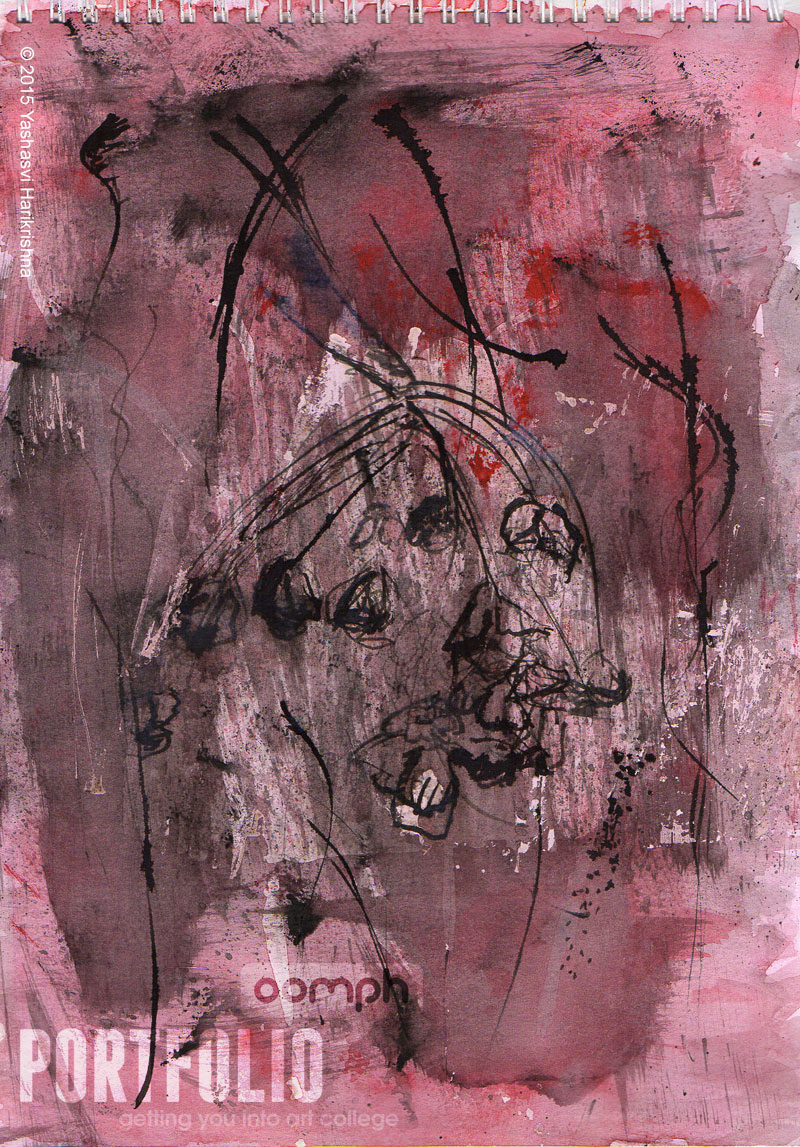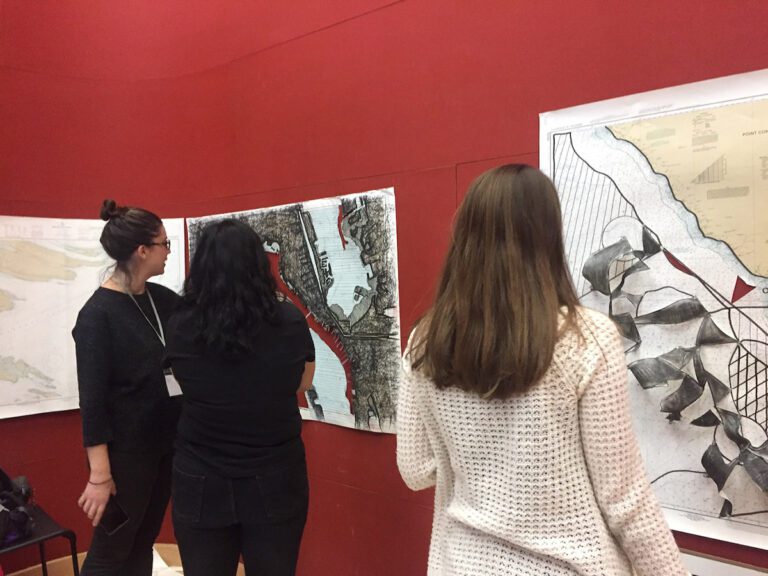The process of applying to art school can be stressful for graduating students, but it can also be stressful for art teachers. We want to make sure to give our students the best possible chance to succeed and be accepted to the program of their dreams, but how?
Although the responsibility ultimately falls on the students, we can provide a solid foundation to help students build technical skills and compelling portfolios.
 Julie Read is someone who knows a thing or two about getting into art school. In fact, she has an entire website dedicated to the pursuit called Portfolio Oomph. Although Julie and Portfolio Oomph are based in Scotland, there are some universal things admissions personnel look for.
Julie Read is someone who knows a thing or two about getting into art school. In fact, she has an entire website dedicated to the pursuit called Portfolio Oomph. Although Julie and Portfolio Oomph are based in Scotland, there are some universal things admissions personnel look for.
Today, Julie is sharing her top 4 tips to help your students craft the best portfolios possible.

1. Help Students Invest in the Research and Development Stages of a Piece
At times, high schoolers have a tendency to produce cliché work. (Raise your hand if you’d be happy to never see another close-up of an eye again.) I asked Julie how teachers can help students push beyond these initial ideas. She told me, “I firmly believe that if a final piece or outcome is not very exciting, a little clichéd, or just plain dull, then it’s down to the research and development stages.”
Of course, as artists ourselves, we know the value of researching and developing an idea. However, many students do not yet possess this skill. Often, Julie says students simply go through the motions of researching and developing, but then end up back at their original idea. They have a fixed idea of what they want to do, so the research and development become quite shallow.
To help students push beyond their original ideas, Julie suggests having students approach their theme with a much more open mind. According to Julie, “Being open-minded and flexible with your thinking usually enables you to be quite tolerant of uncertainty, which essentially is what a strong portfolio is. There is nothing concrete or right, but rather a personal statement about your view of the world.” Learning how to ask relevant and interesting questions related to their own work will take students far.
2. Encourage Students to Take Risks
When the stakes are so high, it’s much easier for students to work within their comfort zones. They stick with the themes and media they know best. However, this can lead to work that feels stiff and uninspired.
When this happens, Julie suggests having students take a break from their portfolio work to do some exercises to get them loosened up. As Julie mentions in this article, there are simple, effective ways to do this including choosing dynamic mediums, asking students to hold materials in different ways, and altering the amount of control students have over materials.
In addition, Julie suggests thinking way beyond traditional art making materials. One way to do this is to encourage students to use materials that are directly connected to their theme. Julie recalled working with one student this past year who was creating a portfolio centered on her compulsion to check and clean her teeth. This student ended up drawing with toothpaste, mouthwash, and other tools used for oral hygiene. Says Julie, “It was a powerful and exciting portfolio that was generated rapidly, and as she was so engaged, it meant so much to her.”
Julie told me one last way to get students to take risks is to make it OK for them to push past the “disaster stage.” In other words, make it OK for students to make mistakes.
Making mistakes requires courage and flexibility. It allows students to see they are capable of obliterating something and dealing with it in a new way. If students need encouragement, Julie has some wise words, “It’s very easy to think that great ideas just drop into artists’ laps. However, a gallery show is likely just 10% of an artist’s output. The other 90% is in sketchbooks, on the studio floor, or even in the trash!”
Julie encourages students to keep their mistakes so they are able to see and show growth. Sketchbooks are a perfect way to do this and should be kept at all times!

3. Make Sure Students Make it Personal
When talking to students, Julie tells them, “The exam boards or art schools don’t want to see a portfolio just like the last one from your school.They want to see something that they haven’t seen before, something that surprises them, that shocks them even! Your portfolio needs to say something about YOU.”
Here’s where the research and development stage can really come in handy. Get students to dive deep and think about things that truly matter to them.
4. Get Students to Dive Deeper
Julie says a portfolio with a limited number of ideas explored on a deep level is almost always stronger than a portfolio that has a lot of ideas that only scratch the surface. She explains it this way, “A portfolio, or even an exhibition in an art gallery for that matter, that really stands out is where there is almost an obsession with the artist’s subject and the possibilities have been explored rigorously.”
If you’re looking for an artist to show to your students exemplifying this technique, Julie suggests Ingrid Calame. According to Julie, “Ingrid has been obsessed with marks on the street, highways, and even her studio floor and she’s analyzed them to death. But in doing so she’s really gotten to know her process, her materials, and her subject in a way just giving something a cursory glance can never achieve.”
Encourage your students to continue to peel back layers until they’ve explored every facet of their theme.
A strong portfolio can make or break your students’ chances to get into art school. As teachers, we can help students develop the skills needed to break through original ideas into deeply meaningful work. Encourage students to make their work personal and focused and to take the research and development phase of their pieces seriously. It will pay off in the end!
Thanks so much to Julie for lending her expertise. If you’d like to learn more, remember to head over to Portfolio Oomph. There is lots of free inspiration and information on the blog!
In addition, if you’re working with AP students, you won’t want to miss the recent podcast and article dedicated to everything you need to know!
Tell us, how do you help prepare your students for a portfolio review?
What other tips do you have to share?
Magazine articles and podcasts are opinions of professional education contributors and do not necessarily represent the position of the Art of Education University (AOEU) or its academic offerings. Contributors use terms in the way they are most often talked about in the scope of their educational experiences.





